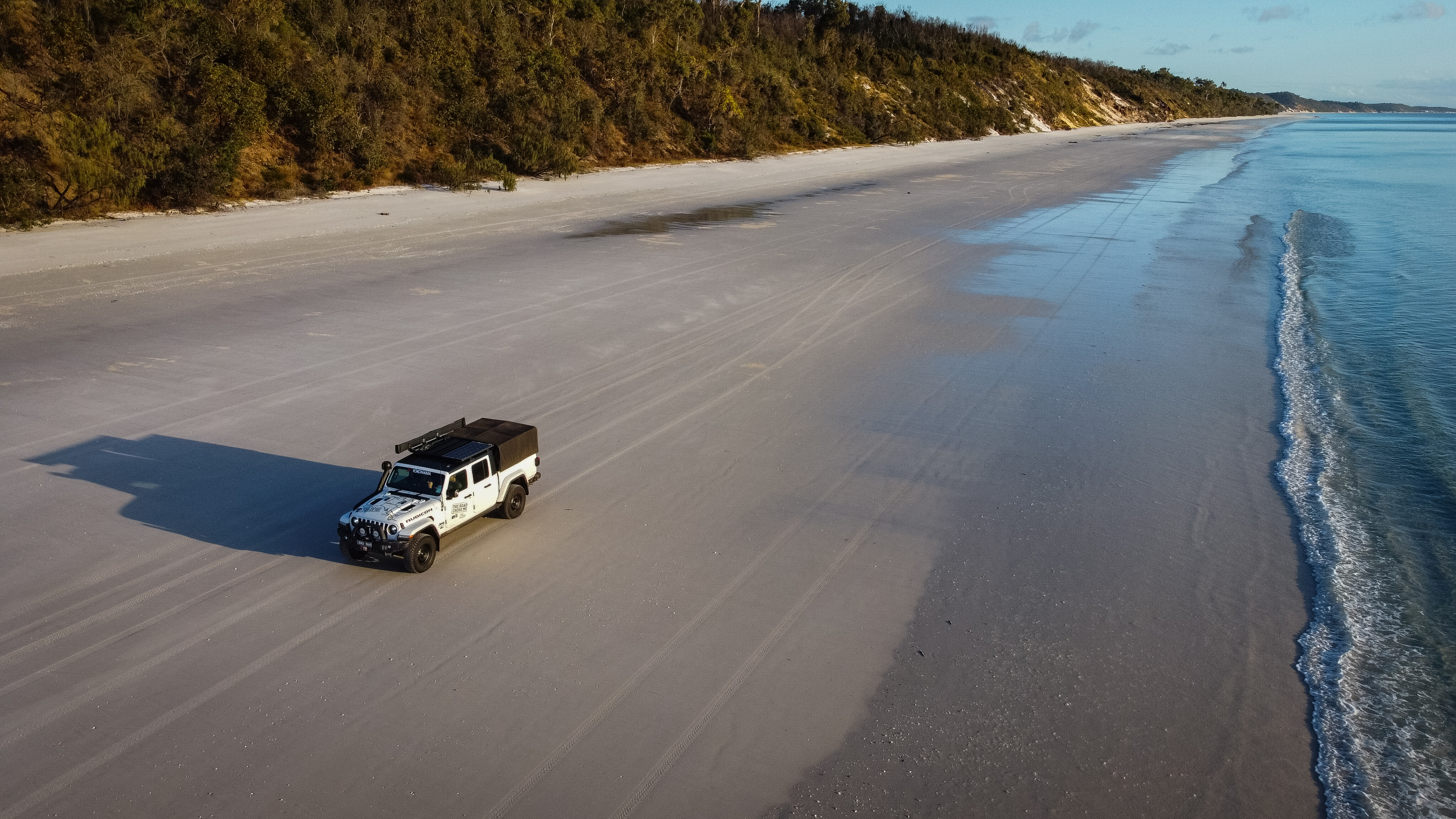
For decades many have referred to Fraser Island as paradise, which coincidentally is the meaning of the island’s original Aboriginal name K’gari, which it has recently re-adopted.
K’gari is the world’s largest sand island, and is made of 113 cubic kilometres of the stuff. Much more than just sand, however, K’gari also boasts rainforests, wildlife, 1000 year old trees and more than 865 species of plants.
This incredible island paradise was UNESCO World Heritage Listed in 1992, and virtually the entire island can be explored with a well-equipped four-wheel drive vehicle.
Always on the lookout to include family, Katie and I meet up with my Uncle Ron, and together we load up on all the supplies we can carry in nearby Hervey Bay. We have 10 days on K’gari ahead of us, including a criss-crossing route from south to north with the aim of visiting all the highlights and out-of-the-way corners the island has to offer.
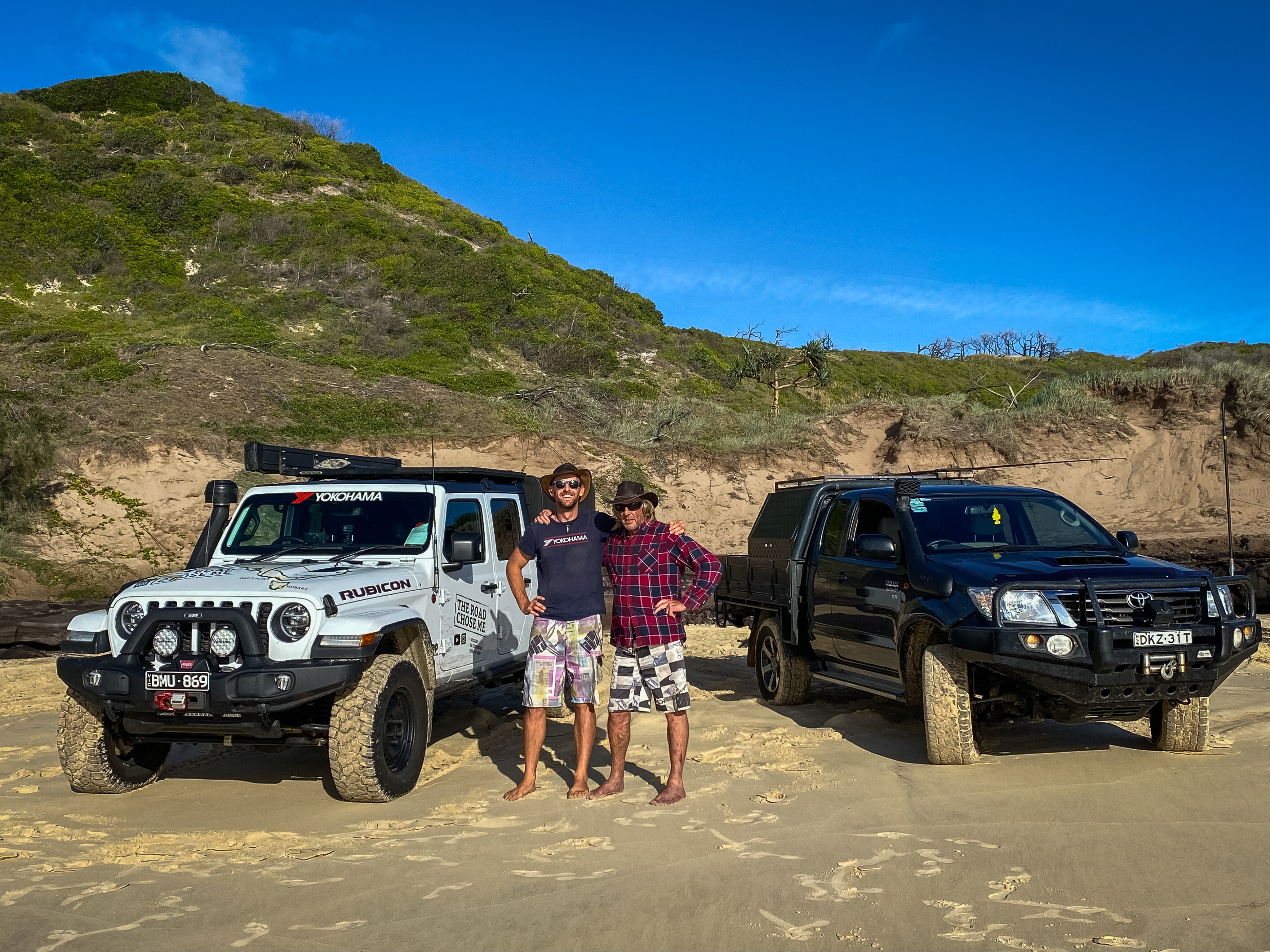
Ferry to paradise
K’gari sits barely a kilometre off the mainland, and multiple barges and ferries regularly make the crossing, transporting an armada of 4x4s and their grinning drivers.
Many of the decked-out vehicles could easily be on the cover of a magazine, and they’re all packed to the brim, ready for adventure.
The excitement is palpable as we join the line up of vehicles before reversing onto the ferry. Loading the ferry in reverse means we’re lined up to drive straight out on arrival, which makes life much easier. The crossing takes barely 20 minutes, and we are quickly off the ferry and onto the island.

Driving on an island entirely made of sand means we need to air down to 16psi all around.
At these pressures the contact patch is increased enormously and will provide plenty of grip in the soft sand. It’s reassuring to know we can still go a lot lower if the need arises but for now we’ll walk the line between traction, fuel consumption and speed.
While crossing the island I’m impressed to see enormous eucalyptus trees forming a dense jungle that allows very little light to penetrate to the forest floor.
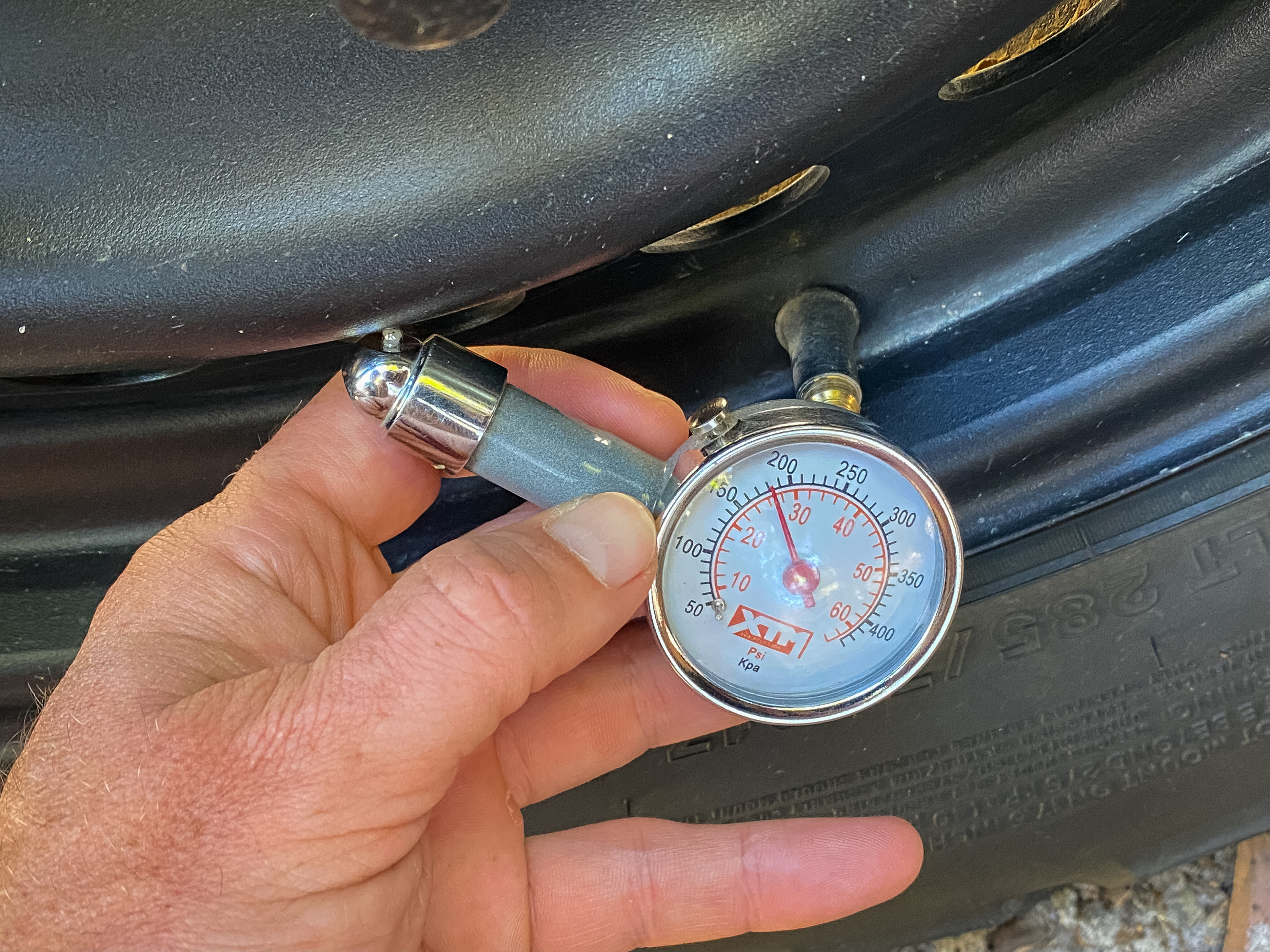
Tracks are rutted sand criss-crossed with tree roots, washouts and rubber matting designed to prevent further erosion.
We arrive on the far eastern side of the island during a rising tide, almost the worst possible time to start our first beach drive. We must drive a few kilometres south to our first of many beach campsites, and we’re all on edge as we race the incoming tide.
Thankfully we make it through with only one small splash of salt water, and we’re elated to see we have our pick of the sites tucked in behind the dunes – there’s not another living soul in sight.
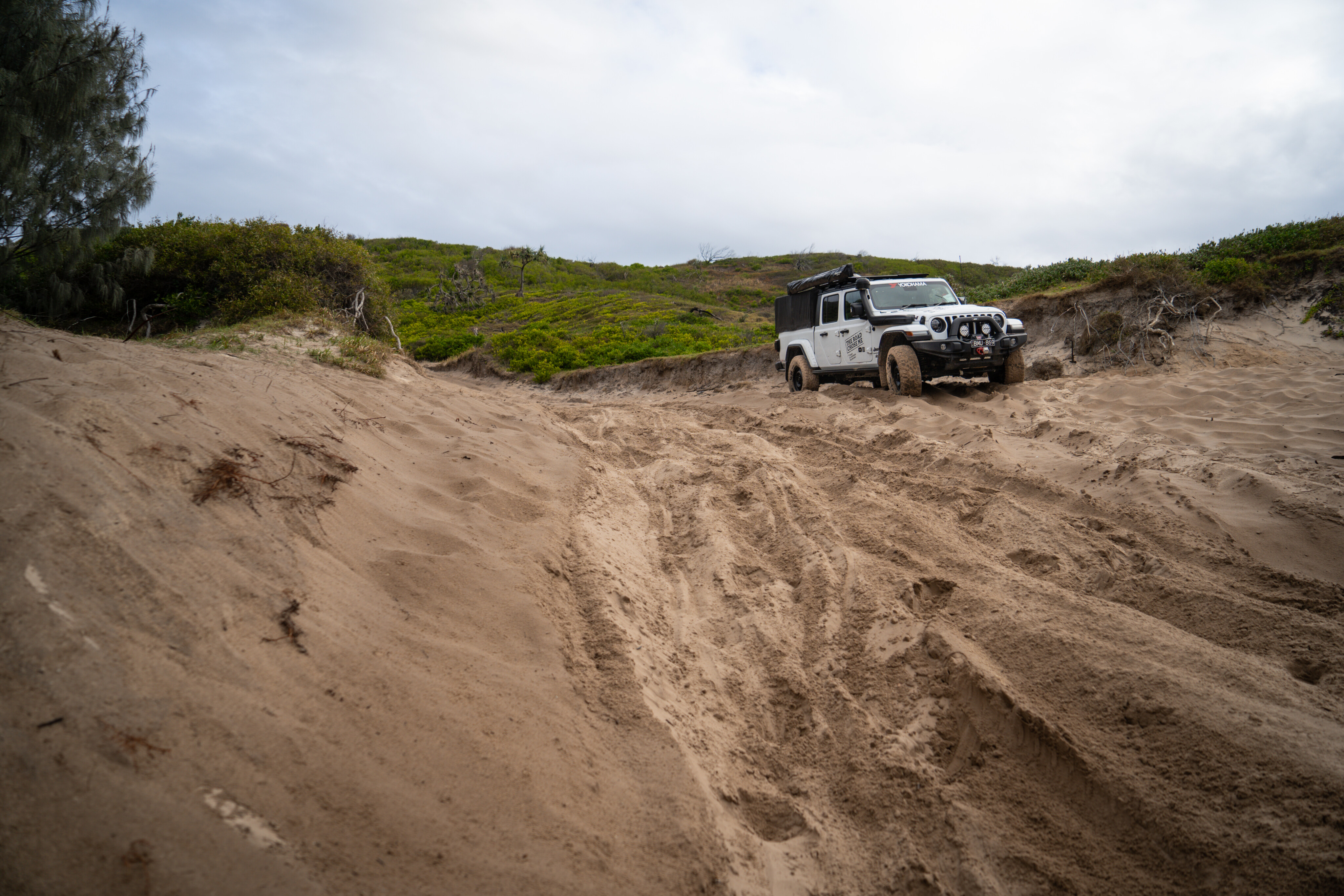
Paradise on Earth
From top to bottom, K’gari is dotted with spectacular places to visit, each of which are a worthy destination in their own right.
After just our first night camping behind the dunes I wonder if 10 days will be enough to see everything we want to see, and so to squeeze the most out of every day we rise before the sun and don’t crawl into bed until long after sunset.
The aptly named 75 Mile Beach runs along most of the east coast of the island, and is designated a main road complete with speed limits and police radar. The sand road is so consistently good it is also used as a runway for light planes, which makes for some interesting decision making while navigating its length.
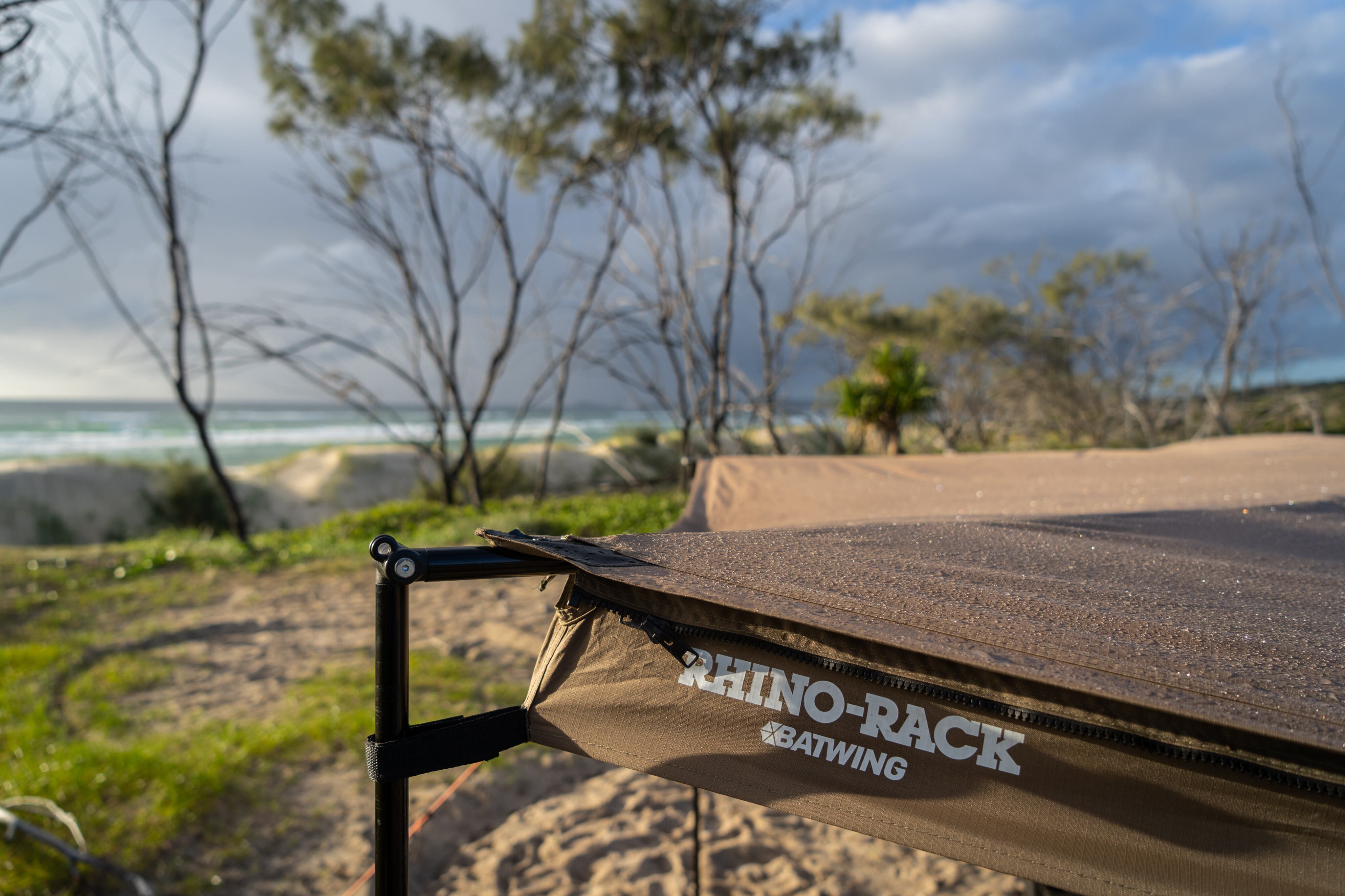
It’s not often I have to also concentrate on the sky while driving.
Halfway along the east coast of the island we stop at the famous wreck of the luxury passenger ship, the SS Maheno. In 1935 the ship was caught in a strong cyclone about 80km off the coast of Queensland while being towed to a scrapyard. The ship became beached on the east coast of the island where it has remained ever since, slowly rusting away in the corrosive saltwater.
Swimming in the ocean off K’gari is ill-advised due to the toothy locals and massive swell, but thankfully mother nature has provided the perfect alternative to combat the intense Australian sun. A series of inland lakes boast white-sand beaches and crystal clear water, and are the ideal places to spend time during the heat of the day.

Just north of the Maheno wreck on the east coast, Eli Creek flows into the ocean and provides not only a refreshing swimming hole, but also hours of entertainment for the whole family.
The crystal clear creek flows at a rate of 80 million litres per day, which provides plenty of flowing water allowing you to drift downstream on just about any kind of inflatable or pool noodle.
Cutting across the island to the west coast we arrive at the breathtaking Awinya Creek camping area where paradise is elevated to a whole new level. With white sand stretching to the horizon, and sunset painting the sky and sand every shade of red, orange and yellow that can be imagined, we’re more than happy with our plan to camp here for consecutive nights.
At sunrise Katie and I hike inland to an enormous sand blow, a unique natural feature created by strong winds that endlessly blow sand inland where it accumulates into huge pristine sand dunes.
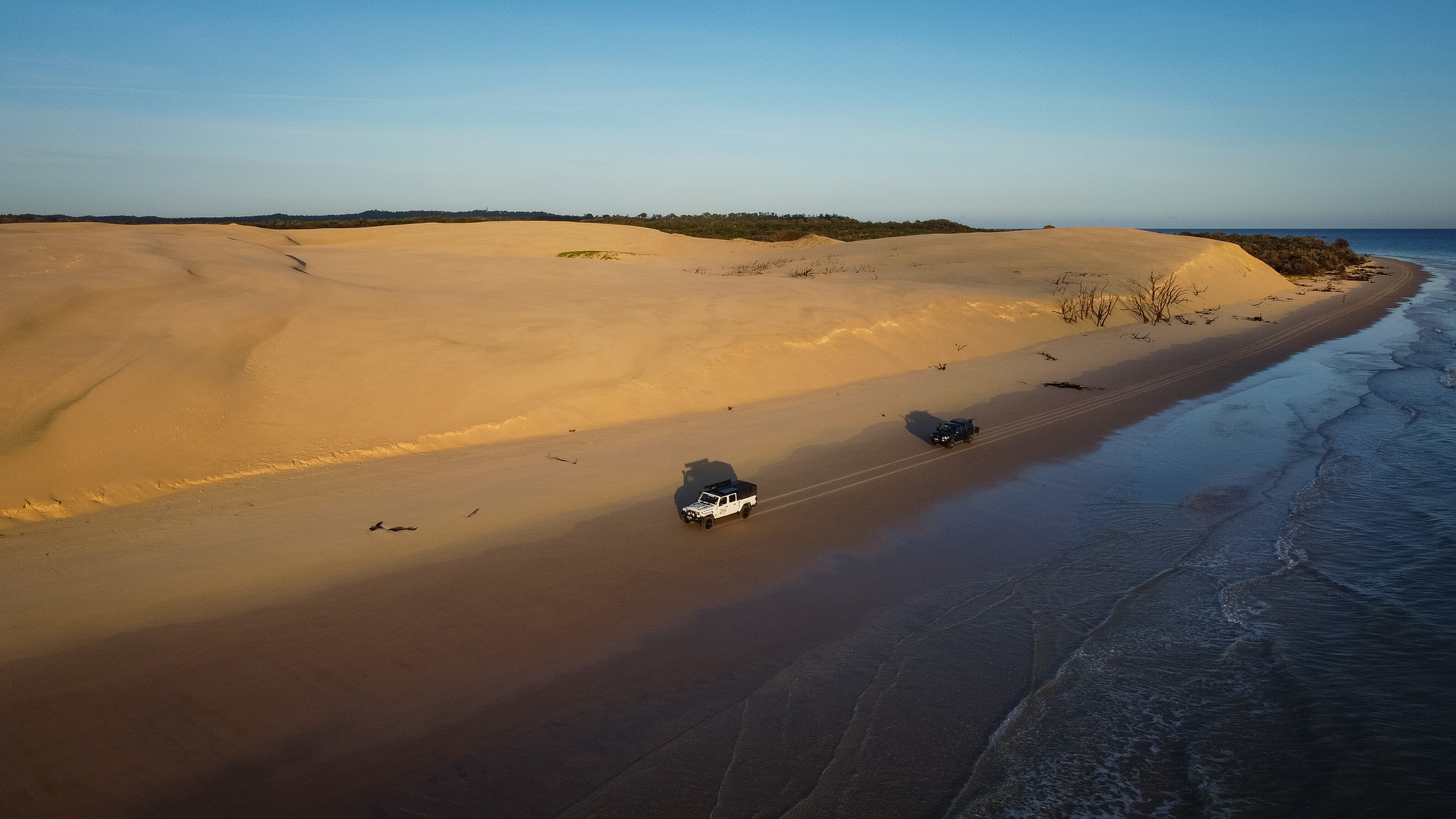
In a constant battle with vegetation these dunes grow and shrink each year, shifting with the wind. It takes us almost an hour to walk up just a small part of the sand blow, and we’re staggered by the size of the enormous dunes.
Back on the east coast we continue north, rounding Indian Head for a visit to Champagne Pools. This series of natural rock pools provide a sheltered swimming area in the otherwise unforgiving ocean. When the tides are timed just right, the largest waves crash over the rocks into the swimming pools in spectacular fashion, creating plenty of foam and excitement for those swimming in relative safety.
Each night we tuck in behind the dunes to camp, and each and every night we are alone, with just the sound of the crashing waves to lull us into a deep sleep.
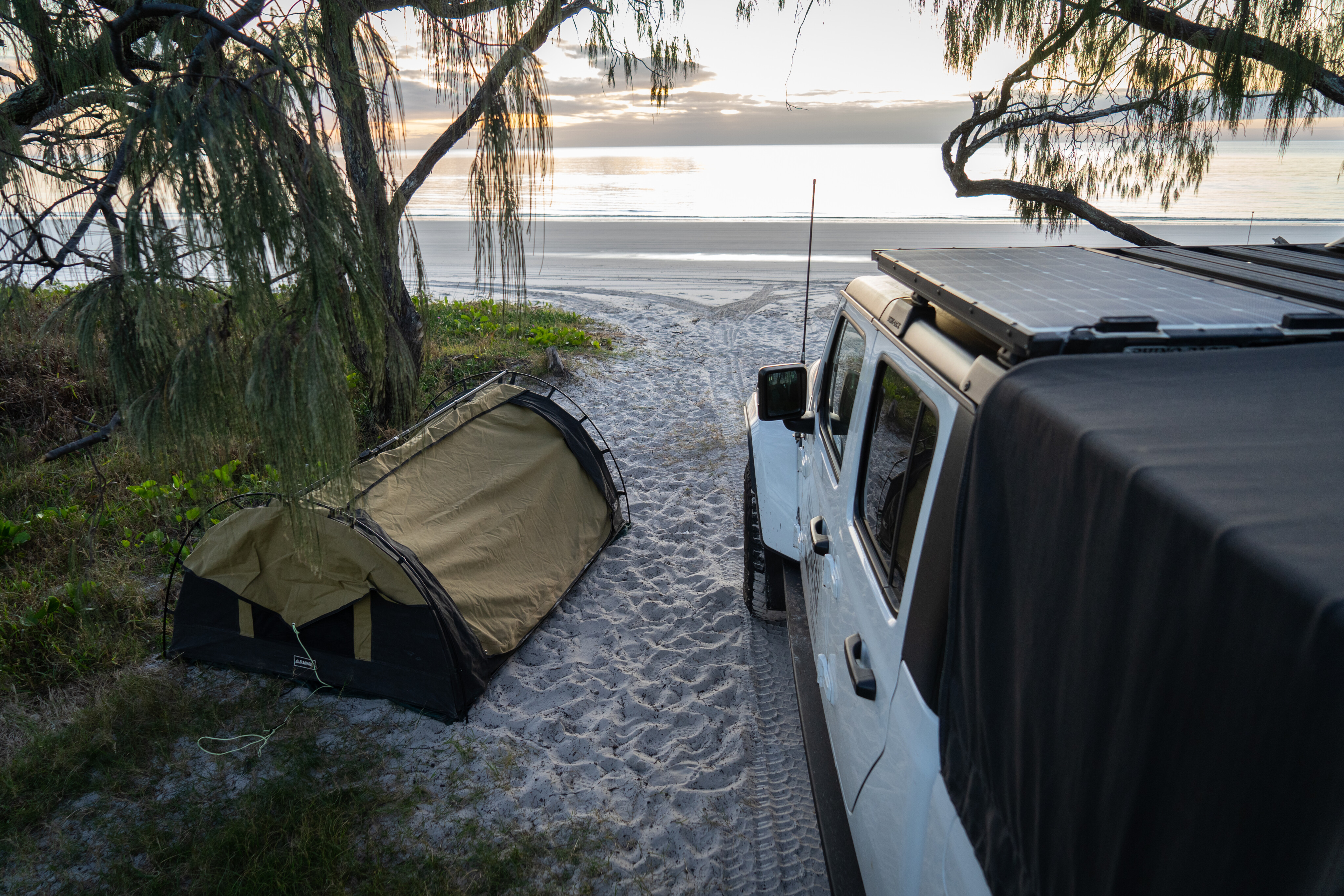
Ngkala Rocks
Carefully studying tide tables, we arrive bright and early at the infamous Ngkala Rocks, one of Australia’s most notorious 4x4 obstacles. Immediately we are greeted by a scene of carnage.
A group of young guys are standing around looking sheepish while they wait for a very expensive tow truck. It takes a good deal of coaxing to get the story out of them, which finally comes out in a flood. Using a huge amount of right foot through the rocks, one of the drivers managed to tear a front wheel and hub off his HiLux, completely blocking the narrow rock canyon.
With no better option they used the other vehicles to drag it through the rocks, folding the wheel underneath and ripping the tyre off the now severely battered and scarred rim.

The tow truck is en route from the southern tip of the island, and will cost upwards of $1000, even before any repair work can begin.
Ron and I are already thinking of skipping the rock section, and when we learn of another stricken vehicle at the far end of the huge sand climb our decision is easy. Wanting to see the entire sandy climb and descent for myself, I walk the length of the rough rock section and then the very long, soft and steep sand corridor.
I’ve seen hundreds of photos and videos of vehicles hopelessly stuck to the chassis rails in this very sand, and I feel a strong sense of déjà vu despite never having been here before.

On the far side I find another large group assessing the damage to an older Nissan Patrol.
The clutch has burnt out in the soft sand, and the team are devising a plan to use three vehicles to pull the dead Patrol up and over the sandy climb, which they do with plenty of engine revving and wheel-spinning.When our turn comes we time the crashing waves and drive on the beach below the rocks, darting around just before the next wave crashes in.
While we avoid the rocks, the extremely soft sandy section is mandatory. Lowering our tyres to 14psi increases the contact patch, and I have no trouble moving forward through the soft sand up and over the climb.
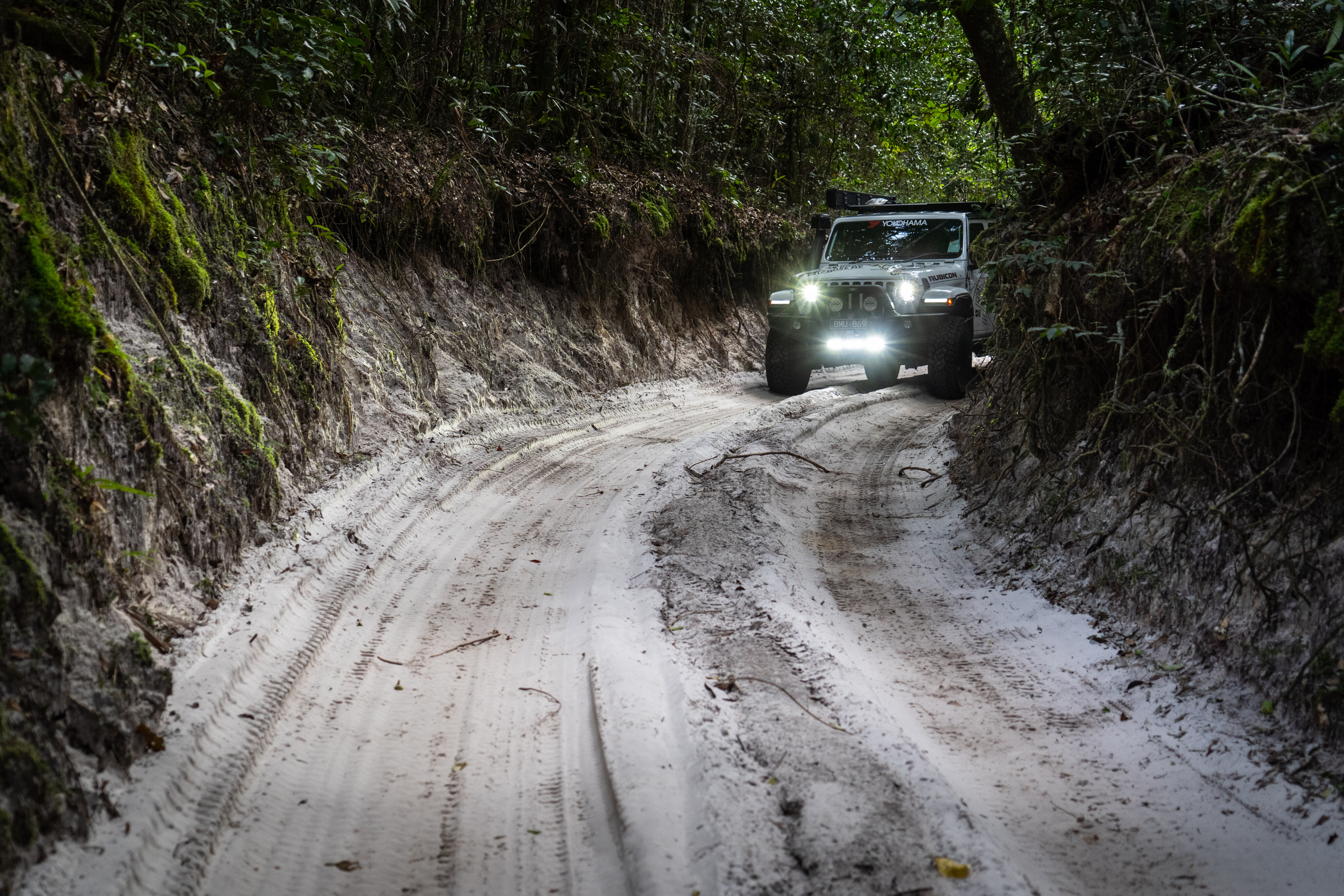
Ron, on the other hand, is not so fortunate, and I dash back with recovery boards in hand to help extract his bogged HiLux.
After lowering tyre pressures to 12psi Ron has no problem moving forward, and together we drive down the other side onto the remote northern beaches.
Continuing north the coastline becomes much more wild and remote, and my jaw drops as we round Sandy Cape at the northern tip of the island where enormous sand dunes drop right into the ocean, leaving just a small strip of beach sand for us to squeeze past at low tide.
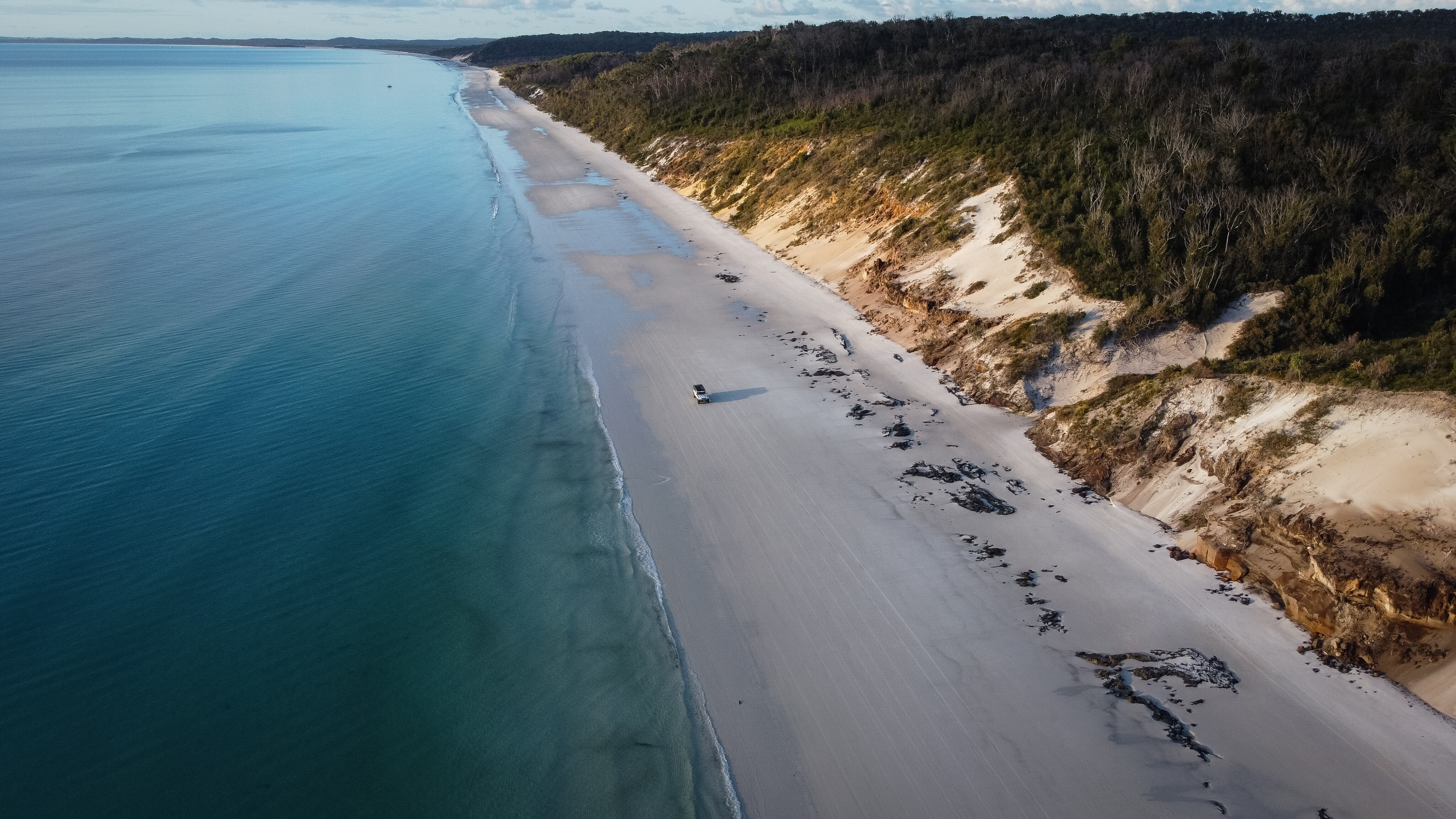
Family time
After exploring the remote corners of the Americas and Africa, I chose to explore Australia so I could include family in my adventures.
There’s no doubt my Uncle Ron had a huge influence on me growing up, and I have fond memories of fishing, hunting and camping with him as a teenager. Ron was my only relative with a four-wheel drive, and he always took me out on adventures when we spent time together.
I’m certain my love of remote exploration is in no small part thanks to him, and I’m extremely happy to spend 10 days together on this adventure. One of the downsides of being a global traveller is the lack of time I spend with my family, and so I try my best to soak in every minute we have together.
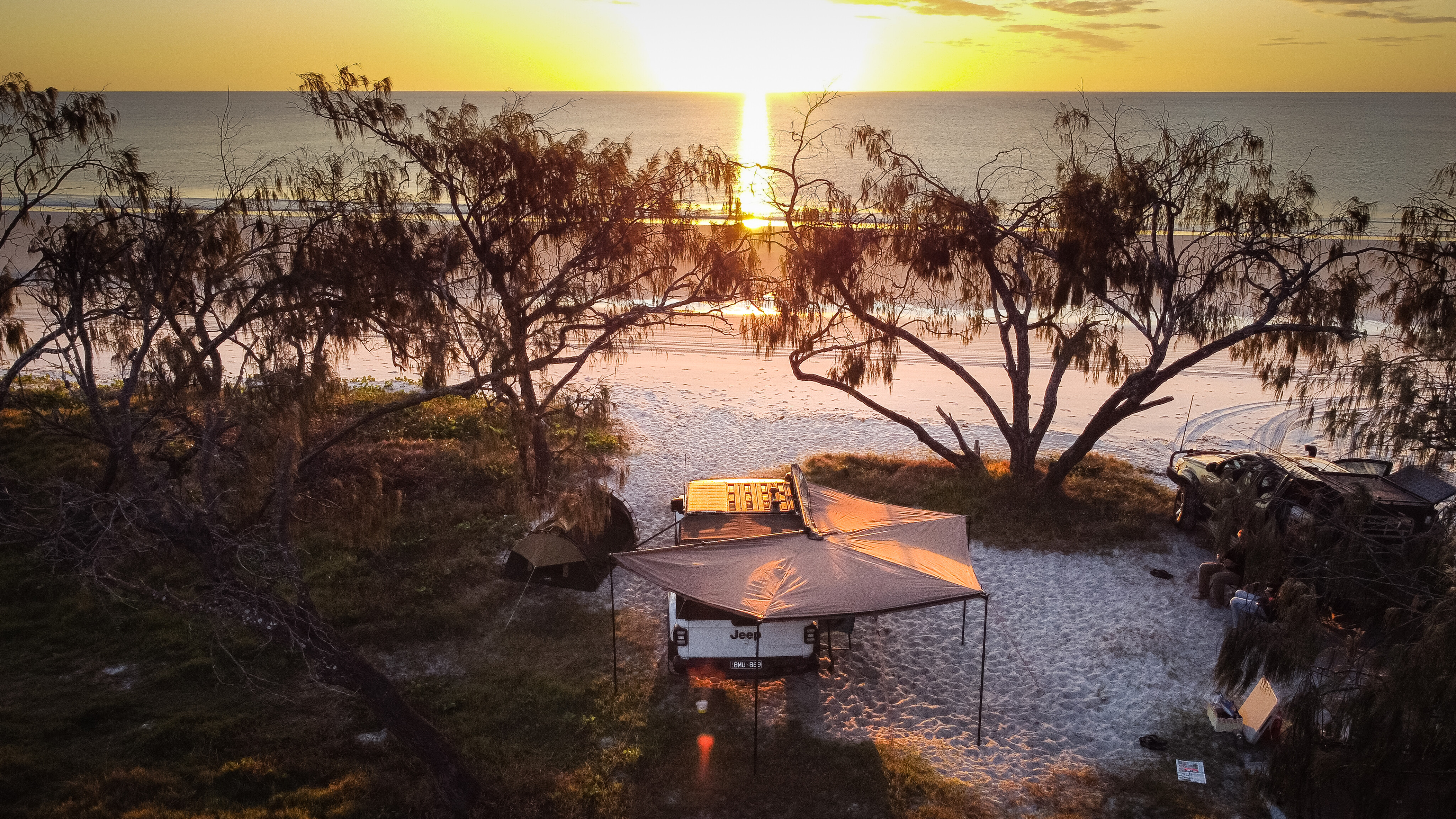
We find a stunning campsite just above the high-tide line at the northern tip of the island, and the sense of relief that washes over Uncle Ron is clear to see.
I pushed to get us above Ngkala Rocks and he was a bit stressed racing the waves and driving in the extremely soft sand. We’re all happy we made it through with no damage, and so we cook a feast to celebrate our stunning campsite.
After dinner the skies open and let loose with a torrential downpour, and we scramble to set up our awnings to enjoy the night while staying warm and dry. We tell stories and reminisce late into the night, listening to the gentle swish of small waves while soaking in the incredible stars as they peek out from behind the retreating storm clouds.
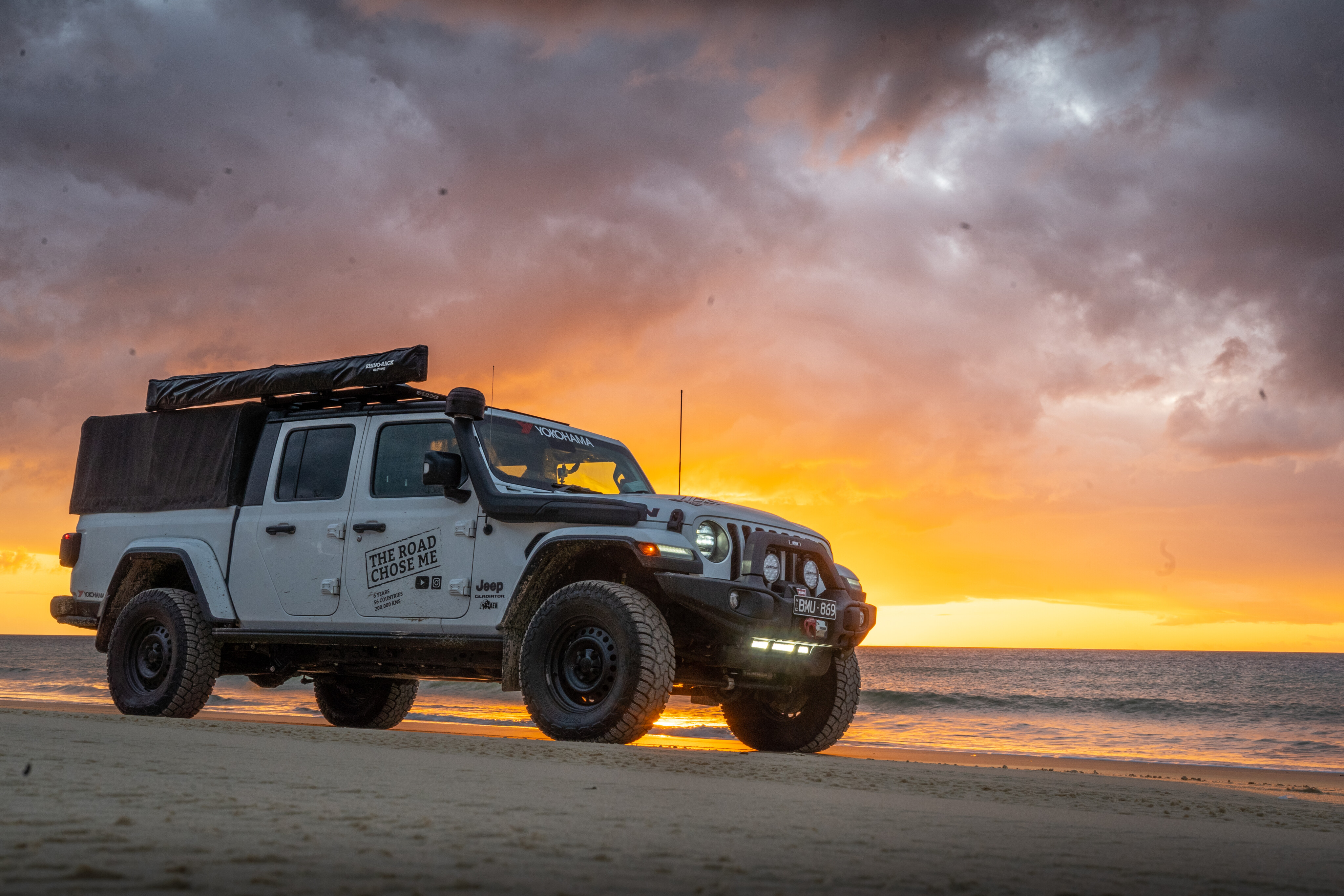
Visitors to camp
After brewing a pot of coffee early the next morning, Ron tries to quietly tell me about unwelcome guests in camp overnight, hoping that Katie won’t overhear. Of course Katie instantly hears our whispers, so we all sit down to get the story.
While we slept soundly in our new campsite, Ron explains how he woke in the night to find the three dingos standing over his swag, growling and baring their teeth. Maybe they heard his snoring as a challenge, or maybe they just want us off their turf.
Whatever the reason, Ron went from dead asleep to wide awake in a single heartbeat, and it took a lot of convincing to get the dingoes to move off. Not surprisingly, Ron says he lay awake for many hours afterwards.
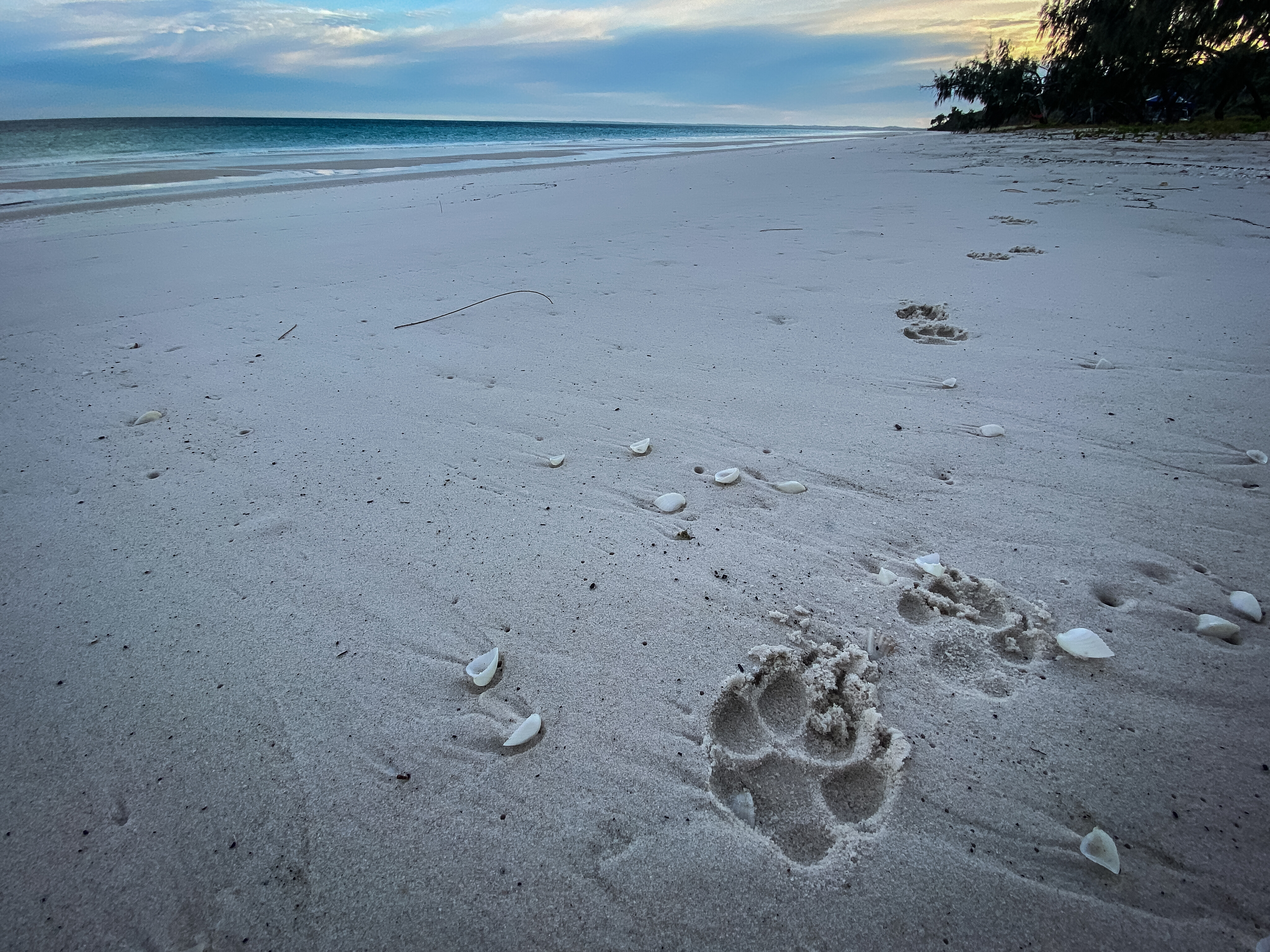
Dingoes are extremely common across the island, and sadly the three hundred or so resident animals have become quite habituated to humans.
While driving the beaches it is all but guaranteed you’ll see them prowling the shoreline searching for any tasty morsel they come across. In the late afternoons and evenings they have learned that humans and campsites mean food, so they move up into the dunes where they inevitably come into close contact with people.
Attacks on adults are exceedingly rare, though dingoes have attacked and seriously injured children on more than a few occasions over the years. During the daylight hours we are not scared of the many dingoes that come towards our camp, and so far yelling, clapping and shooing has moved them along. Overnight, however, they are not so easily deterred.
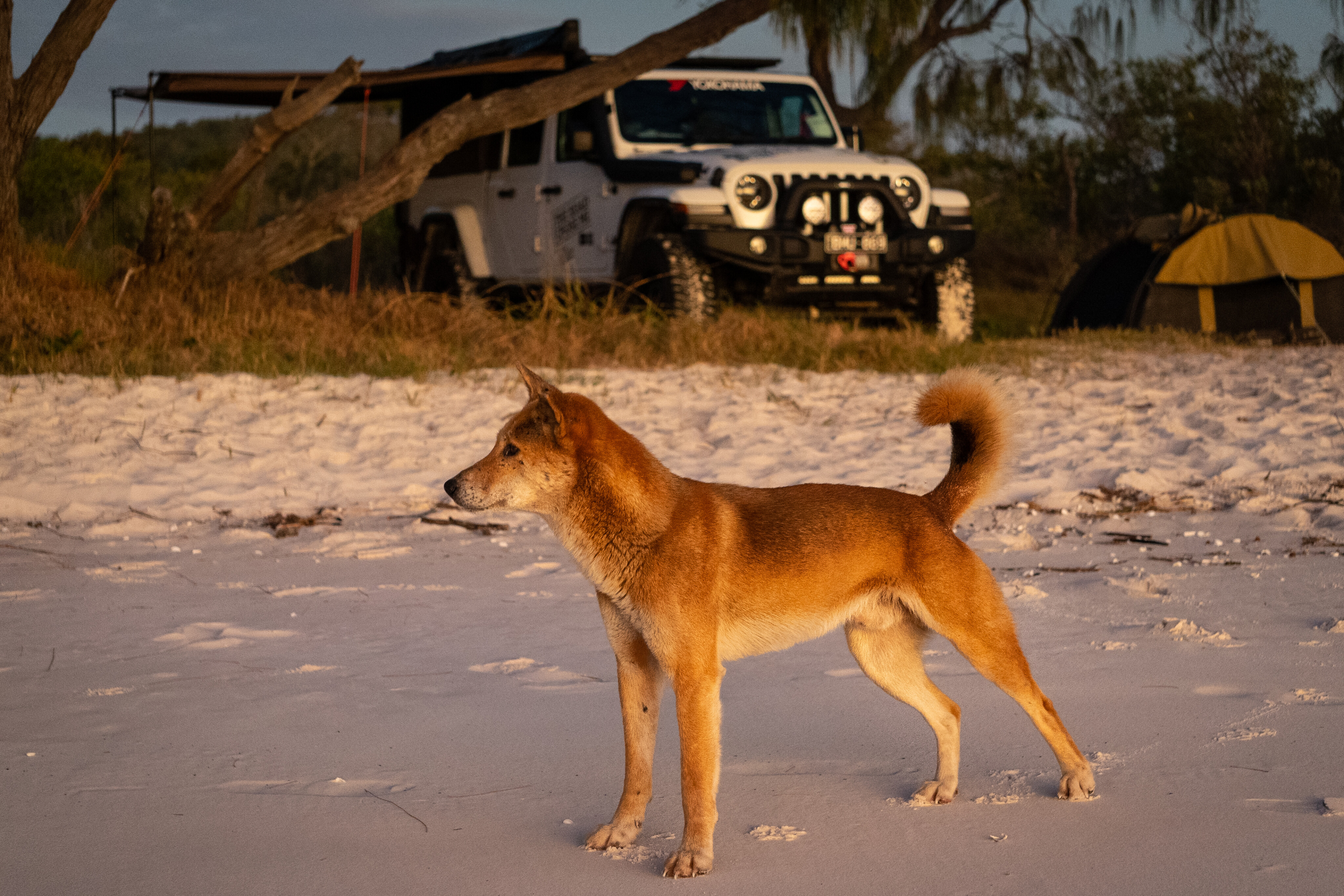
Fish the bite back
K’gari is famous for its superb fishing, especially along the eastern coastline directly into the South Pacific.
Some of my earliest memories of fishing are with Uncle Ron, when we would four-wheel drive along sandy tracks before continuing on foot into remote beaches around Southern Australia. Ron is a master at reading the waves, tides and beach sand to find the deep channels and gutters to fish, and more often than not we trudged off the beach carrying a fish too big for me to carry.
Eager to relive past fishing trips Ron brought all his gear and each afternoon we set up on the sand, throwing our lines out repeatedly into the crashing waves as we enjoy catching up on all the years that have passed. Try as we might, the days roll by without catching a single thing – in fact, they roll by without so much as a single bite.
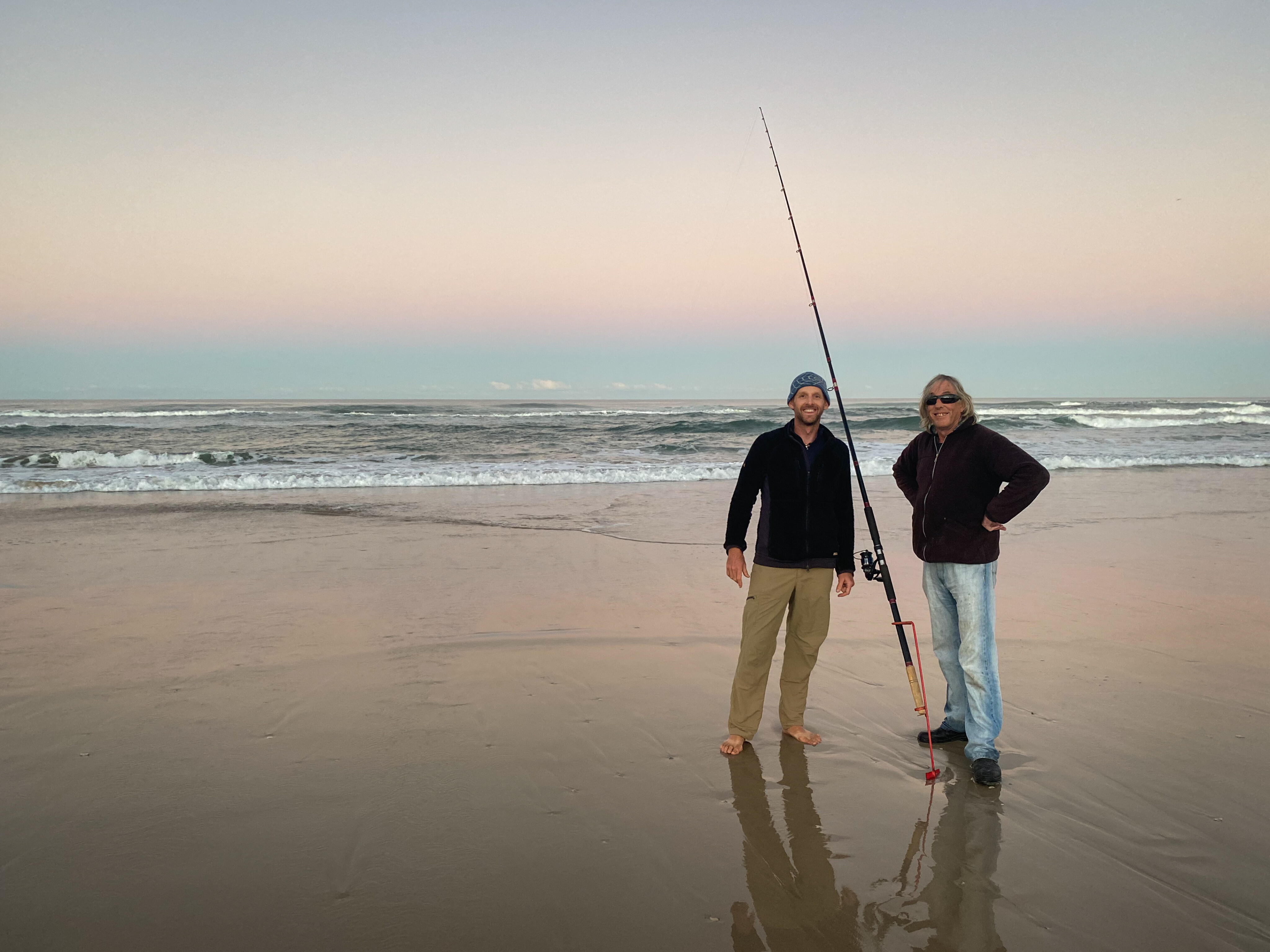
With pride on the line, it all comes down to our final night on the island, and as Ron casts out our final strip of bait into the dark night we both agree we have done everything we can.
A few seconds later the line is screaming off the reel and the fight is on. Over the next 15 minutes Ron plays the game of allowing the fish to run before winding in whenever possible. It’s a fine balance to avoid breaking the line, and he works hard at the fight.
Under the glow of our headlights we finally land a thresher shark that is about one meter long. Catching the shark on our last strip of bait seems fitting, and we’re both happy we can call it quits. Back in camp we spend an hour carefully cutting up the delicious flesh before packing Ron’s freezer to the brim.
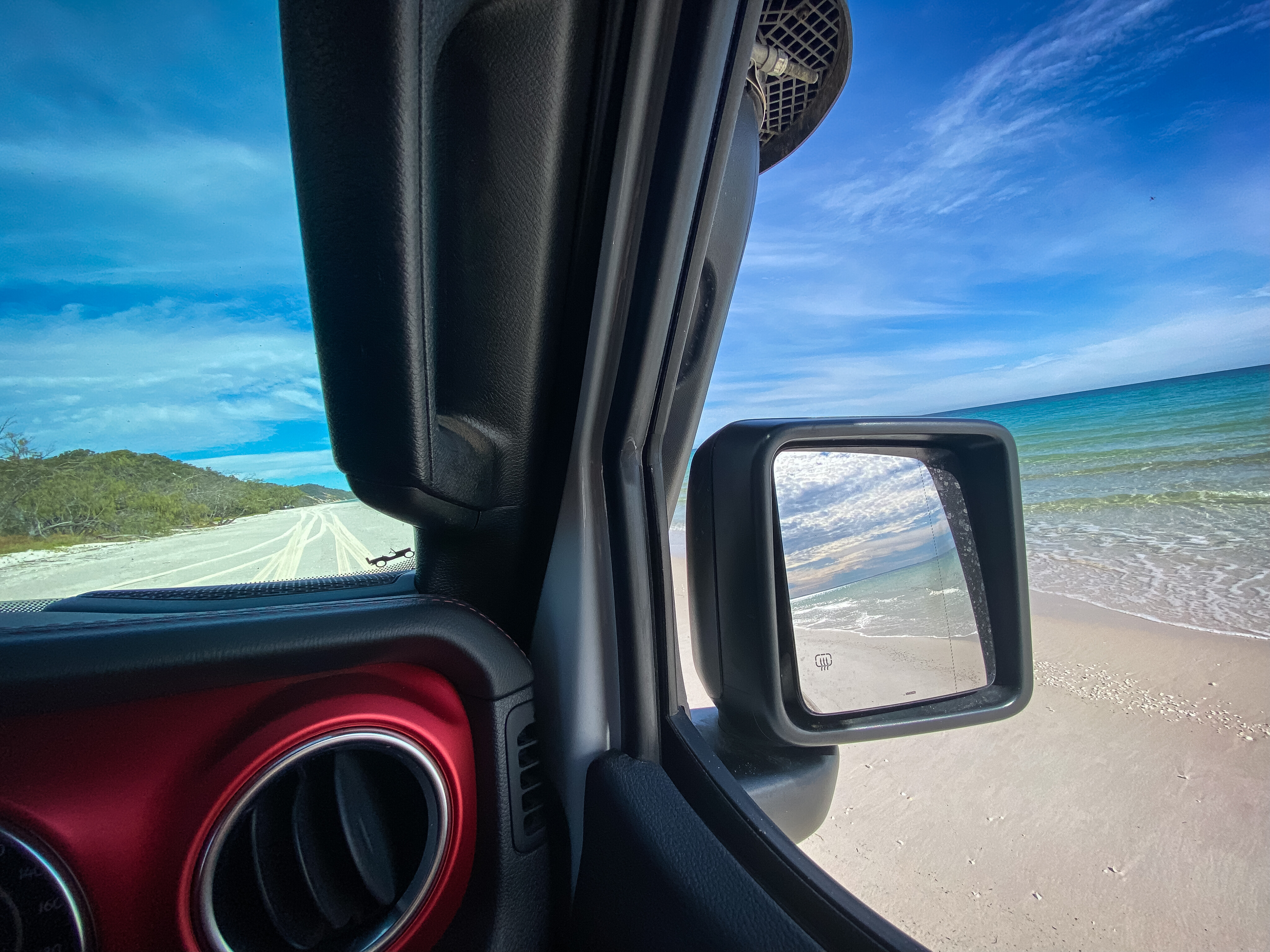
All good things
I’ve seen countless photos and videos of K’gari over the years, and in retrospect I have no hesitation in saying not one of them did the island justice.
From my very first minutes on the island I was constantly blown away by the breathtaking beaches, the enormous inland forests, the lakes, the rivers, the rocks and the wildlife. Camping directly behind the beach dunes night after night is impossible to beat, and tackling the continuously shifting sand and changing conditions kept us on our toes behind the wheel.
With bacon and eggs for breakfast, tales of world adventures, beach fishing, hiking and plenty of laughs and smiles around the campsite, Uncle Ron was a welcome addition to our time in Australia, and I’m immensely happy we were able to spend so much time on this adventure together.
Naming an island ‘paradise’ might seem a bit over the top but in this case, I think it’s completely justified.

K'gari facts
- Aboriginal name: K’gari (pronounced ‘gurri’)
- European name: Fraser Island
- UNESCO World Heritage Listing: 1992
- Coastline: 316km
- Area: 1840km²
- Permanent inhabitants: 182
- Dingo inhabitants: About 300
Join Dan’s ongoing global adventures on YouTube and Instagram @TheRoadChoseMe [↗️]

COMMENTS